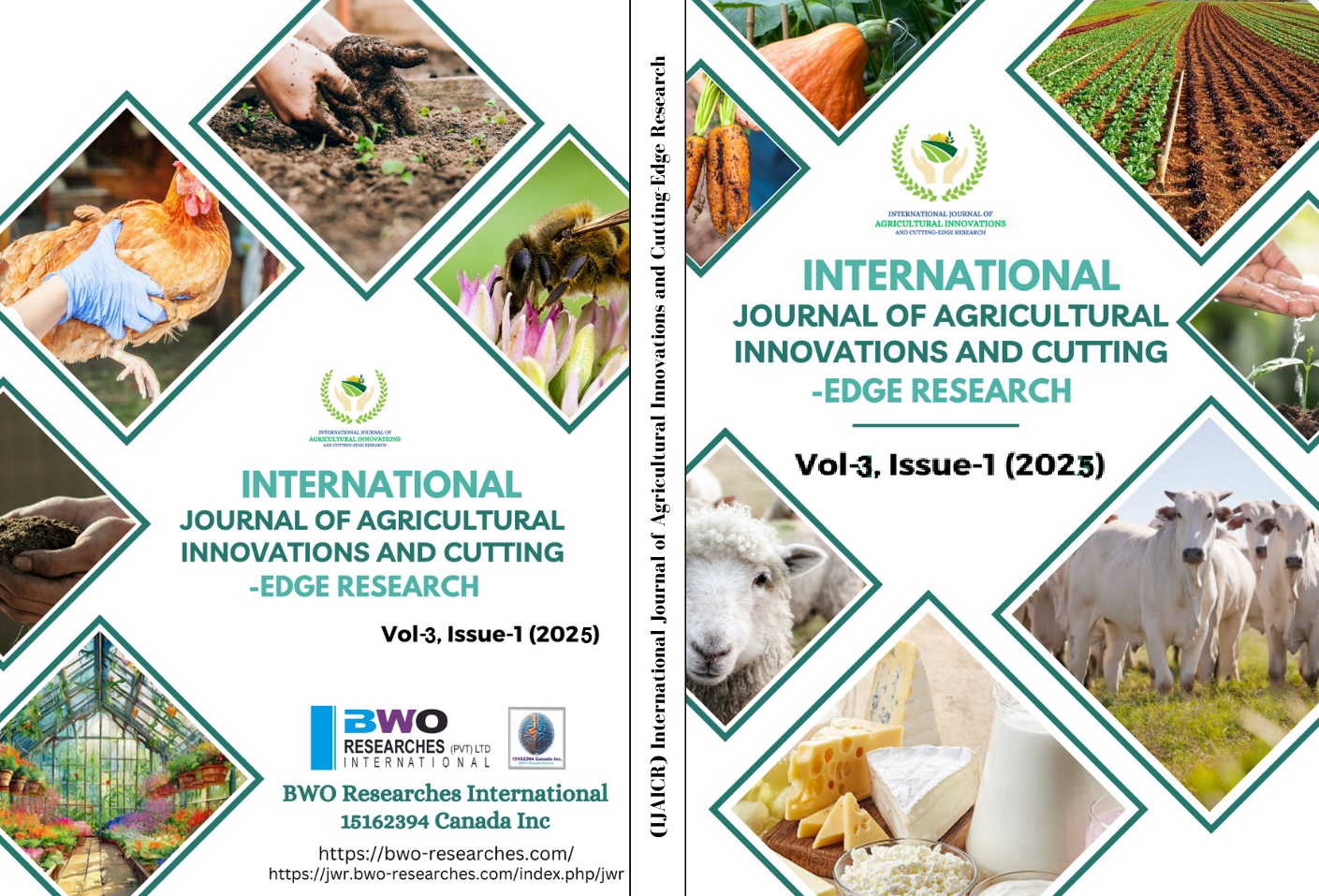The morphological and taxonomic identity of Aphaenogaster Beesoni Donisthorpe
1933 (Stenammini: Myrmicinae: Formicidae) from Hilly Areas of Punjab and Khyber Pukhtoon Khwa
Keywords:
Aphaenogaster Beesoni, Morphology, taxonomy, Ant diversity, MyrmicinaeAbstract
This study focuses on the morphology and taxonomy of a Stenammini species, Aphaenogaster beesoni Donisthorpe, 1933, of the Myrmicinae subfamily. Ant specimens were collected using pitfall traps, baiting, and leaf litter sifting in diverse habitats including forests, deserts and agricultural fields, from provinces of Pakistan. Samples were collected and preserved in ethanol, and identified by different taxonomic keys. The worker ants are less than 5 mm in length and are light brown colored with a two-toned body. Petiolar nodes were specialized; morphological analysis showed 12-segmented antenna with a club segment for four, complex elongated mesosoma and morphological features were shown. The study also looks at ecological adaptations and divergence among the species, through A. beesoni. The results provide important insight into the taxonomic diversity and functional role of the genus, including that of mutualistic seed dispersal. The regional biodiversity studies of Aphaenogaster are ideally suited to build on this foundation in the future.
References
AntWiki. Aphaenogaster beesoni. Available at: https://www.antwiki.org/wiki/Aphaenogaster_beesoni. Accessed [24.11.2024].
Arnoldi KV. The ants of the USSR and adjacent countries. Nauka, 1976.
Bernard F. Les fourmis (Hymenoptera Formicidae) d'Europe occidentale et septentrionale. Éditions Masson, 1967; 1974.
Bharti H. Larval instar estimation and ultra‐structural analysis of Aphaenogaster cristata (Forel, 1902) and Aphaenogaster pachei (Forel, 1906) (Hymenoptera: Formicidae) from the Himalayas. Entomological Science, 2023; 26(4).
Bingham CT. The fauna of British India, Including Ceylon and Burma. Hymenoptera Vol. I: Wasps and Bees. Taylor and Francis, 1897.
Bingham CT. The fauna of British India, Including Ceylon and Burma. Hymenoptera Vol. II: Ants and Cuckoo-Wasps. Taylor and Francis, 1903.
Bolton B. Synopsis and classification of Formicidae. American Entomological Institute, 2003; 71:370.
Boulay R, Cerdá X, Fertin A, Ichinose K, Lenoir A. Brood development into sexual females depends on the presence of a queen but not on temperature in an ant dispersing by colony fission, Aphaenogaster senilis. Ecological Entomology, 2009; 34(5):595-602.
Caut S, Barroso Á, Cerdá X, Amor F, Boulay R. A year in an ant's life: Opportunism and seasonal variation in the foraging ecology of Aphaenogaster senilis. Ecoscience, 2013; 20(1):19-27.
Collingwood CA. A key to the ants of Northern Europe. Entomologist's Gazette, 1978; 29:127-136.
DeMarco B, Cognato A. A multiple‐gene phylogeny reveals polyphyly among eastern North American Aphaenogaster species (Hymenoptera: Formicidae). Zoologica Scripta, 2015; 45(5):512-520.
Gove A, Majer J, Dunn R. A keystone ant species promotes seed dispersal in a “diffuse” mutualism. Oecologia, 2007; 153(3):687-697.
Johnson C, et al. Ecological adaptations in seed-harvesting ants. Annual Review of Ecology, Evolution, and Systematics, 2022; 53:195-212.
Prior K, Meadley-Dunphy S, Frederickson M. Interactions between seed‐dispersing ant species affect plant community composition in field mesocosms. Journal of Animal Ecology, 2020; 89(11):2485-2495.
Prior K, Saxena K, Frederickson M. Seed handling behaviours of native and invasive seed‐dispersing ants differentially influence seedling emergence in an introduced plant. Ecological Entomology, 2013; 39(1):66-74.
Zettler J, McInnis T, Allen C. Biodiversity of fungi in red imported fire ant (Hymenoptera: Formicidae) mounds. Annals of the Entomological Society of America, 2002; 95(4):487-491.
Additional Files
Published
How to Cite
Issue
Section
License
Copyright (c) 2025 International Journal of Agriculture Innovations and Cutting-Edge Research (HEC Recognised)

This work is licensed under a Creative Commons Attribution-ShareAlike 4.0 International License.
BWO Research International
15162394 Canada Inc.,
Kitchener, ON, N2G2B3,
Canada

